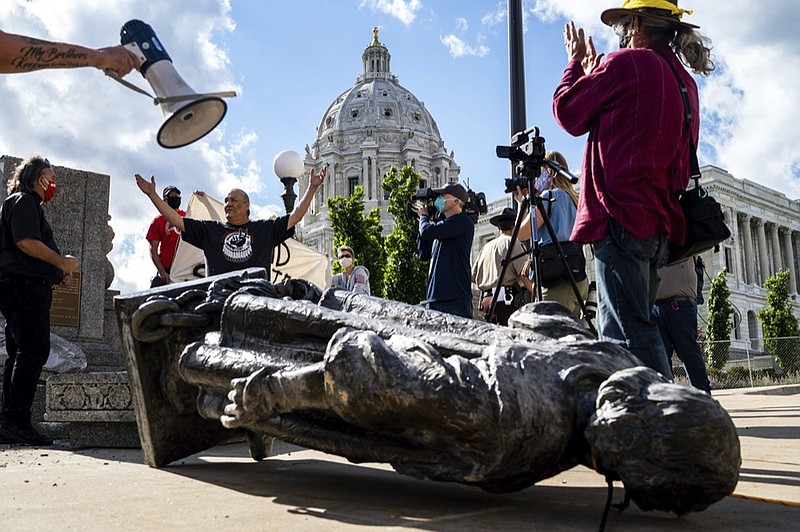As many Americans sit at home, the world outside their forced COVID-19 safe space is changing rapidly and in astonishing ways.
Confederate flags, for many the unofficial symbol of NASCAR and as tied to the sport as hot dogs to baseball, have been banned at races. A portion of Seattle has been taken over by protesters. Statues standing for more than a century are being hauled down. Restaurants, tourist attractions and corporations are stepping over themselves to send out apologies over the sin of racism or any perceived past racial slights they unintentionally may have made.
Where and how it will end no one knows. A Chattanooga activist and candidate for a city council seat says she will protest every day until things change. She may be out there a while.
The death of black suspect George Floyd in Minneapolis at the hands of a white policeman one day may stand as a turning point in American civil rights history.
The wrenching result of an officer kneeling on Floyd's neck for nearly nine minutes cannot be disputed like the "hands up, don't shoot" claim concerning black suspect Michael Brown and a white officer that began an uprising in Ferguson, Missouri, in 2014. This one has video evidence seen by tens of millions of people. Even those who would defend every use of force by law enforcement officers aren't disputing what the video shows.
The George Floyd incident has allowed many Americans to see as their parents and grandparents did with the death of Emmett Till in 1955 or with the firebombing of a Birmingham church that killed four little girls on Sept. 15, 1963: What it was - and is - like to be a black person living in America.
The grotesquely beaten and bullet-ridden body of Till in an open casket was photographed because Till's mother wanted people to see what had been done to her son. The deaths of the girls were prominently broadcast by televisions that almost every home had. Before those incidents, the savagery of what often had been done to blacks was buried in the back pages of newspapers.
The world has radically changed since then. A black man has been president, and others sit on corporate boards, in Congress and in every conceivable profession. But all is not perfect and won't be no matter how many statues fall, businesses are looted or apologies uttered.
Instead, we see merit in the words of Carolyn Maull McKinstry, then a young black eyewitness to the Birmingham bombing.
"Governments and organizations haven't been able to erase human suffering on earth," she wrote in the 2011 book "While the World Watched." "I have come to understand that hearts must be changed one person at a time in order to truly put racial prejudices and violence behind us. The better way - the only way - is the personal way. The only hope for true transformation is for concerned, compassionate individuals to stop watching and decide to became ambassadors of forgiveness, peace and reconciliation."
